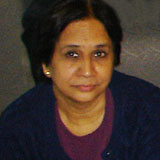WikiEdProfessional eLearning Guidebook/Foreward
Professional eLearning Guidebook
Change appears to be the only constant in the field of information and communication technologies and what was avant garde two years ago is today passé. If coping with such rapid change in the field is getting increasing difficult and complex, it is even more difficult when one tries to simplify the concepts and processes and help academics and educators who have to grapple with effective educational delivery.
In 2003, we brought out the first print version of our little book on E Learning. It was an outcome of our explorations and experimentation and intended as a primer for those who seek to venture into a new field. It was a matter of great satisfaction when I found that we had gone through two print runs and our own analysis of our website showed that three years after it was published, it attracted more than 400 downloads in a month.
Pleasantly surprised, I reread the book. When I then compared it to the developments in the field, I was convinced that the book, while remaining relevant, needed to be revised and updated, taking into account the feedback we had received, our own experience at using in training programmes, and most important, that the field of e learning, on line learning and open educational resources (OER) had undergone a sea change in these three years.
To review, update and refresh the book, we commissioned the original team of Dr. Som Naidu, Associate Professor at the University of Melbourne, Australia, and Dr. Sanjaya Mishra who has since become an Associate Professor at the Indira Gandhi National Open University, India. Through several discussions, face to face, and on line using the latest technologies across continents, we rewrote the book and tested the technologies that are changing the way in which education is being designed and delivered. We tested the draft in a training programme, included that feedback as well as expert reviews of content, before bringing the second edition to you.
Once again, this is neither a definitive publication nor a treatise on e learning. It is designed to highlight the important issues, to ask the key questions and to tease the reader into independent thought so that decisions are based on sound judgment rather than wishful thinking.
We are now moving forward with an exciting adventure to release a digital wiki version of the 2nd Revised Edition under a Creative Commons License. Hopefully the community will assist in keeping the content up to date and relevant for the needs of eLearning practitioiners in the Commonwealth.
In concluding, I would like to thank large number of people, too many to be named singly, but each equally valuable in terms of their contribution to making this publication as handy and relevant as the first edition
Dr. Usha Vyasulu Reddi
Director, CEMCA

